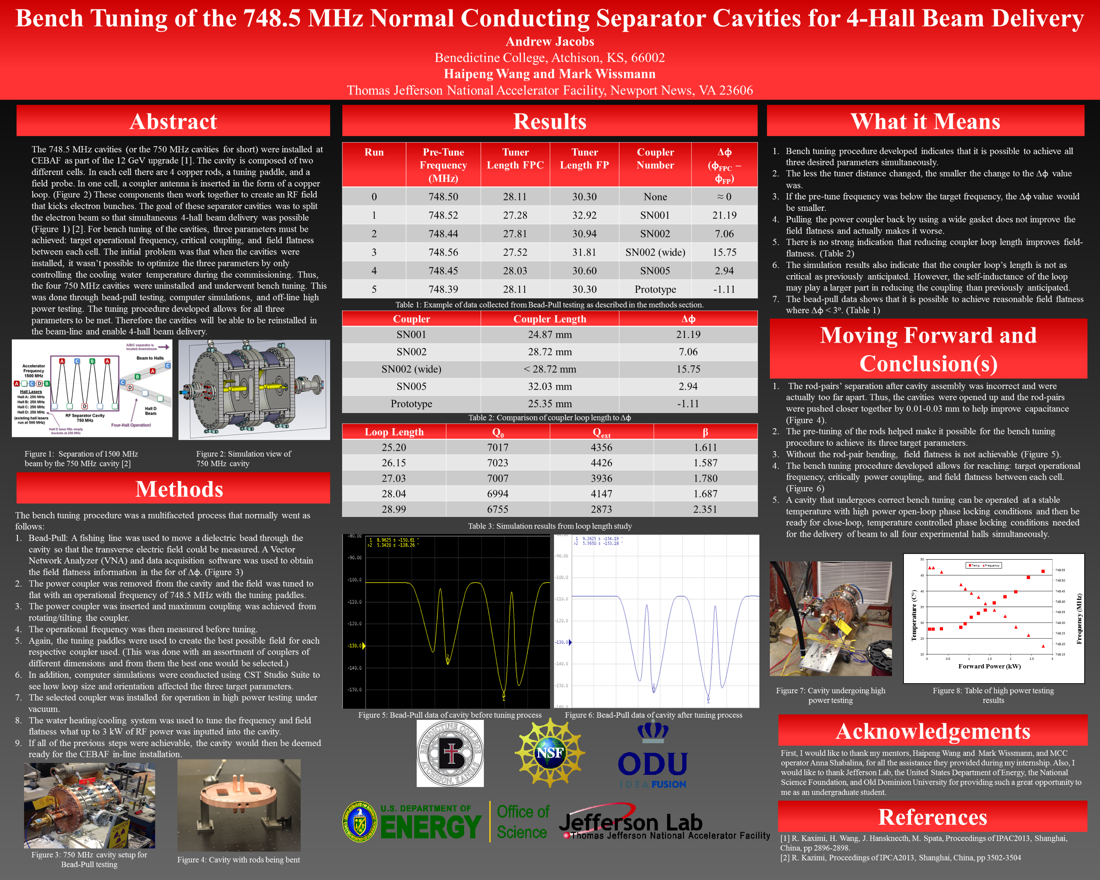Undergraduate Research at Jefferson Lab
Bench Tuning of the 748.5 MHz Normal Conducting Separator Cavities for 4-Hall Beam Delivery
Student: Andrew Jacobs
School: Benedictine College
Mentored By: Haipeng Wang and Mark Wissmann
The 748.5 MHz cavities (or the 750 MHz cavities for short) were installed at CEBAF as part of the 12 GeV upgrade. The cavity is composed of two different cells. In each cell there are 4 copper rods, a tuning paddle, and a field probe. In one cell, a coupler antenna is inserted in the form of a copper loop. These components then work together to create an RF field that kicks electron bunches. The goal of these separator cavities was to split the electron beam so that simultaneous 4-hall beam delivery was possible. For bench tuning of the cavities, three parameters must be achieved: target operational frequency, critical coupling, and field flatness between each cell. The initial problem was that when the cavities were installed, it wasn't possible to optimize the three parameters by only controlling the cooling water temperature during the commissioning. Thus, the four 750 MHz cavities were uninstalled and underwent bench tuning. This was done through bead-pull testing, computer simulations, and off-line high power testing. From the data collected, we have shown that the lack of field-flatness is caused by a lack of coupling. For example, when a coupler loop that is under-coupled is used there is a field difference of over 10°. However, when a coupler loop that is over-coupled is used, there is a field difference of less than 1°. These results indicate that coupling must be maximized to solve the problem of field flatness. To maximize coupling, the shape of the coupling loops will need to be altered, along with the orientation of copper rods located on the interior of the cavity. The data collected is also intended to allow for the cavities to be tuned to 748.5 MHz, operate with field flatness, and power in critical coupling. The bench tuning procedure that has been developed will utilize the tuning knobs (hardware) to tune all of the production separator cavities to all three target parameters: operation frequency, critical power coupling, and field flatness between the two cells. This in turn will allow for CEBAF to simultaneous deliver beam to all 4 experimental halls as part of the post 12 GeV Upgrade project.

Citation and linking information
For questions about this page, please contact Steve Gagnon.
